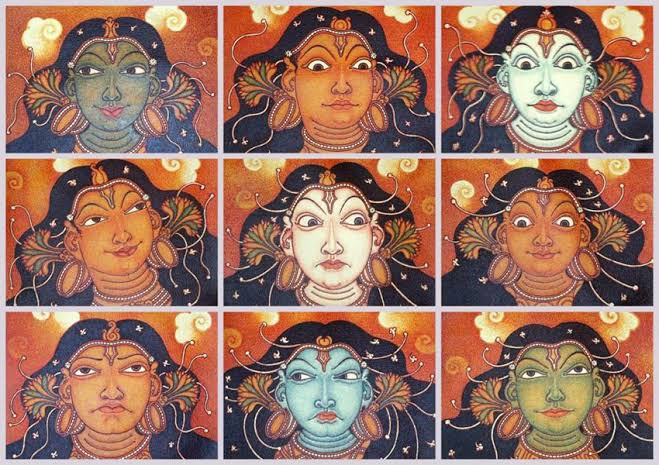In Indian Aesthetics, Rasa theory occupies a pride of place in the feild of literary criticism. Indian sage Bharatamuni, who lived sometimes between 1st century BCE or 3rd century CE is the proponent of Rasa theory. In his Natyashastra, Bharatamuni gives a detailed analysis of dramatic art. It is the oldest extant work in Indian Poetics. Rasa is the keyword to Sanskrit literary criticism. Rasa theory can be applied to all forms of literature produced in every part of the globe.
'Rasa' literally means taste, flavour, relish or richness. It is the aesthetic emotion or the pleasure. It can be described as the response to art. Response of a spectator or reader is more important than the artist's act of creation.
The creation of 'Rasa' is the very core of the Sanskrit 'Natya' Theory. Every dramatic presentation was aimed at evoking a particular kind of aesthetic experience in the minds of audience which is described as 'Rasa'. Bharata explains 'Rasa sutra' in Natyashastra as:
" Vibhavanubhava vyabichari samyogidi rasanispatti" which means the evocation of Rasa is happend through the combination of determinants ( Vibhavas), Consequent( Anubhava) and transistory states or fleeting emotions( Vyabhikaribhavas).
Bharata classifies the 'Rasa' into eight categories (ashtarasa) and also added their corresponding 'Bhava' (emotion)which results in the creation of 'rasa'. These are known as 'Sthayibhavas' or pervading stable emotions. They are
*Rati (love)
*Hasa (mirth)
*Shoka (grief)
*Krodha( anger)
*Utsaha (heroism)
*Bhaya (fear)
*Jugupsa (disgust)
* Vismaya (wonder)
The corresponding eight rasas are:
1.Shringara (amourous)
2.Hasya (humorous)
3.Karuna (Pathetic)
4.Raudra (furious)
5.Vira (valorous)
6.Bhayanaka ( horrific)
7. Bibhatsa (repugnant)
8. Adbhuta(wondorous)
These eight stayibhavas inherit all human beings. They deeply rooted in human psyche, are inborn and innate emotions. Sthayibhavas are the permanent emotions.
Rasa is accomplished as a result of the proper conjunction of Vibhava Anubhava and Vyabhikaribhava.
Vibhava
Vibhava is the objective condition or reason for producing an emotion. Vibhava is the karana for bhava. It is devided in to two. They are Alamabana and Uddipana Vibhava.
Alambana vibhava
Alambana Vibhava refers to the person or persons with reference to whom an emotion is aroused.
Uddipana vibhava
Uddipana Vibhava refers to the circumstances or background features which enhances the dominant emotions.
For instance, In Shakunthala, the princess Shakunthala is the Alamabana Vibhava of Dushyantha's love where the beautiful background, the flora and the fauna in the surroundings are the Uddipana Vibhavas.
Anubhava.
Anubhava refers to the facial expressions or the bodily gestures by which an emotion is expressed.
For Example, the longing look of a lady, her inviting smile, sight etc.
Vyabhikaribhavas
Vyabhikaribhavas are the transitory emotions such as anxiety, sorrow, disappoinment, etc which feed the dominant emotions.
To achieve the Rasa of any literary work, one should be able to achieve it. Bharata speaks about a model spectator or ' Sahrdaya'. It is a person who can enjoy the dramatic performance with all his senses and is expert in judging it's pros and cons and can ignore a fault and appreciate it's merit.





No comments:
Post a Comment